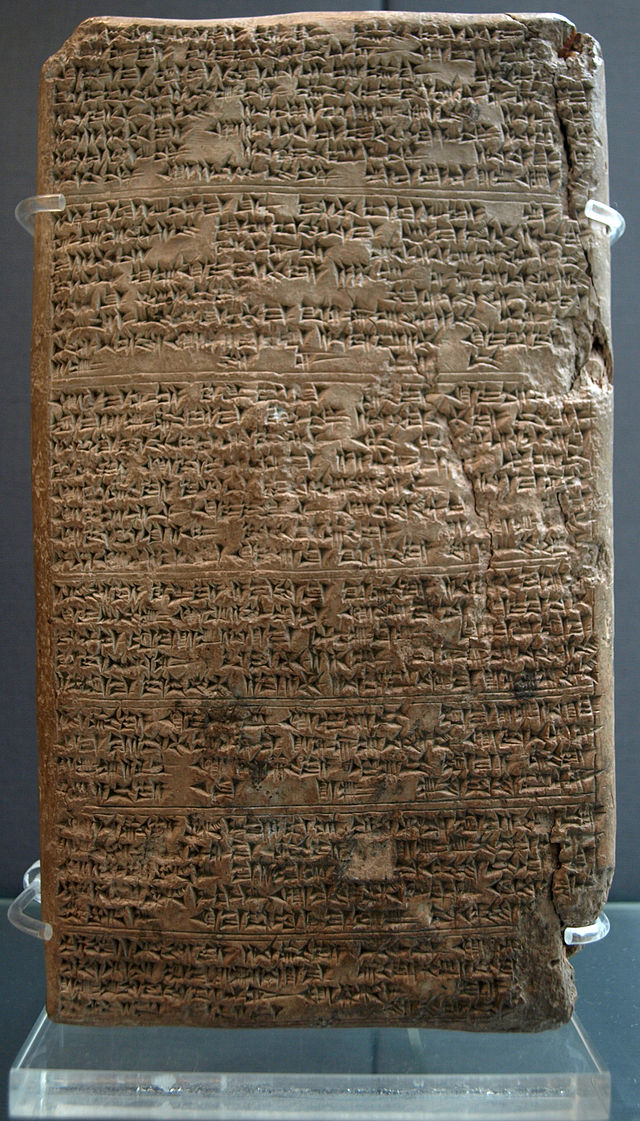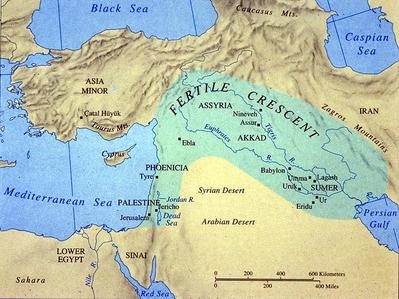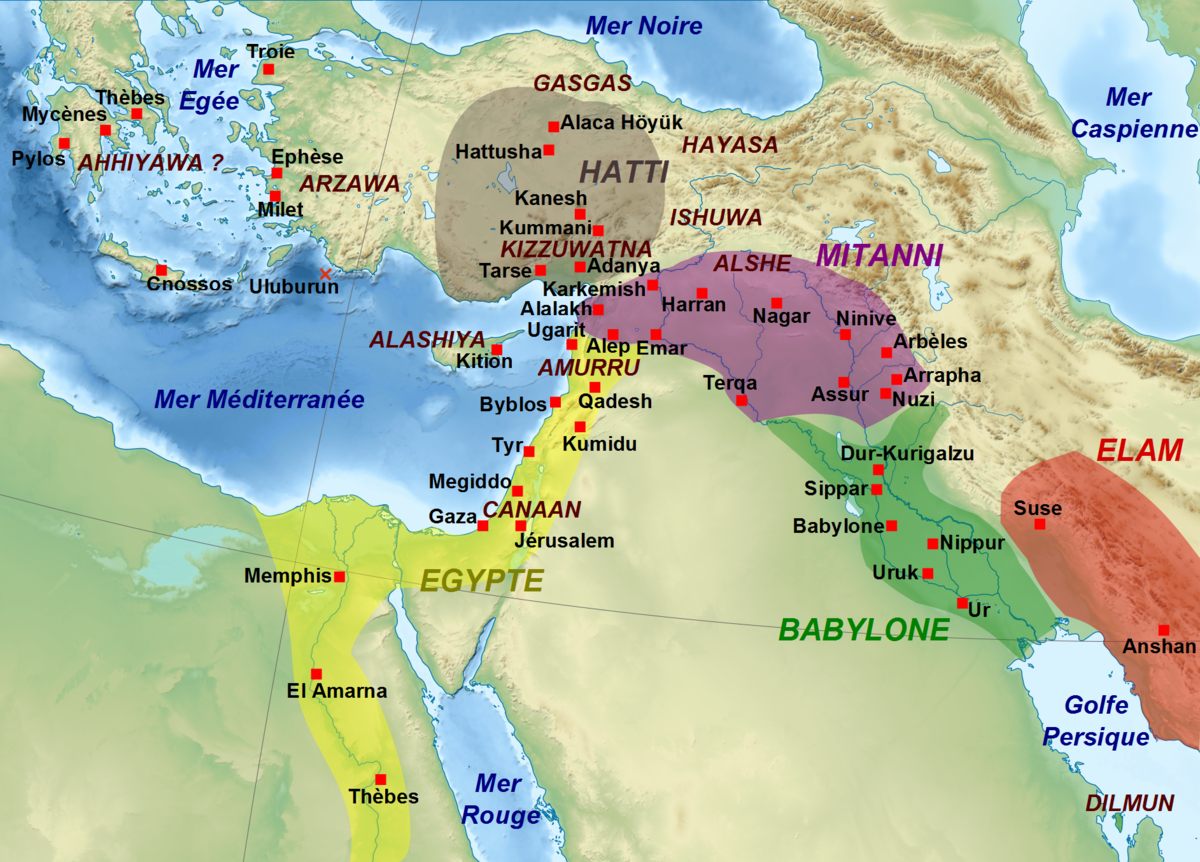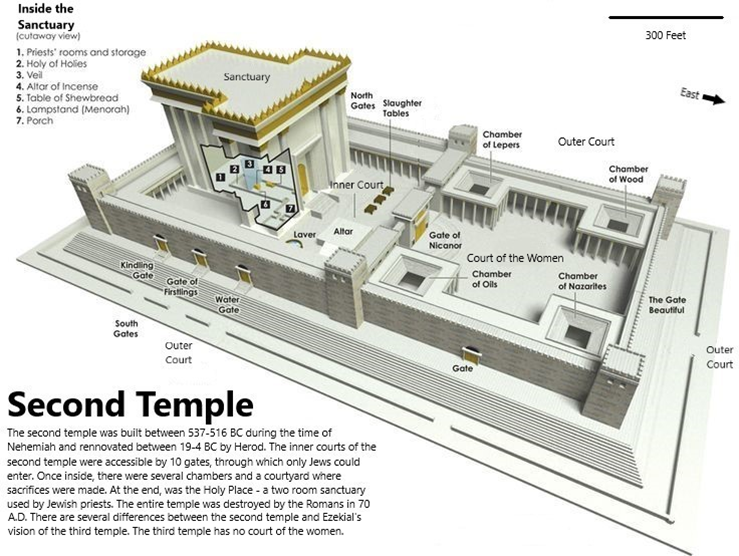Important:
this page is not about history but about a view on a history.
|
4. THE CLAIM ON JERUSALEM
Speaking about tablets. This map in the French language shows you the situation during the Egyptian Amarna period.

The Amarna Letters are a group of around 400 clay tablets inscribed in cuneiform (“wedge-shaped”) Akkadian writing that date to the fourteenth century B.C. and were found at the site of Tell el-Amarna, the short-lived capital of ancient Egypt during the reign of Amenhotep IV / Akhenaten (ca. 1353–1336 B.C.). Most of these letters come from vassal cities in Syria-Palestine, including Byblos, Tyre, Gezer, Hebron, Shechem (Nablus), Ashkelon, Megiddo, and Jerusalem. The letters from Jerusalem (written as “Urusalim” in the Amarna texts) are from a Canaanite ruler named Abdi-Heba. In multiple letters Abdi-Heba states that he “falls at the feet of my lord the king, seven times and seven times,” a stock phrase and common ancient Near Eastern motif that conveys his faithfulness to his Egyptian suzerain. He also makes clear that it was not his “father or mother who put me in this place” (on the throne), but rather the “strong arm of the king.” This is a clear indication that he wasn't the heir to the throne as it was given by the Egyptian king himself. But, Abdi-Heba is a theophoric name invoking a Hurrian goddess named Hebat, implying that the Jebusites were Hurrians themselves, were heavily influenced by Hurrian culture, or were dominated by a Hurrian maryannu class. The letters come a few centuries before King David would ostensibly vanquish the Jebusite tribe of Jerusalem and make it his own capital. So, to our understanding, Abdi-Heba appears to be from Hurrian descend. He led, however, the Jebusite tribe, whom roots is unclear. 
According to Edward Lipinski, professor of Oriental and Slavonic studies at the Catholic University of Leuven, the Jebusites were most likely from the Amorite tribe (see map) who are ancient Semitic-speaking people who dominated the history of Mesopotamia, Syria, and Palestine from about 2000 to about 1600 BC. Lipinski identified the Jebusites with the group referred to as Yabusi'um in a cuneiform letter found in the archive of Mari, Syria. However, most Biblical scholars hold the opinion that the Jebusites were identical to the Hittite tribe, originally Indo-European who entered the area better known as Anatolia, in Turkey and from there into Upper Mesopotamua.. This indicates that the Jebusite tribe are also not the indigenous people of Jerusalem nor of Canaan just like the Israelites. They are at least the pre-Israelite inhabitants of Jerusalem, and named after Jebus the strongest fortress in Canaan. It is very clear that Jerusalem became Jewish by means of King David. So, it is completely false to claim that Jerusalem is Jewish. The fact is that Jerusalem became Jewish and after King David's desire was bloodily fulfilled. That is a much different story. During the Medieval Ages, Christianity, an offshoot of Judaism, returned back to Palestine and reached Jerusalem in a similar way: also by wars but by Crusaders to drive out the Muslim rulers. But, the city returned under Muslim ruling centuries later: by the Ottomans. If we would continue to speak in a religious way, we then would reflect: God didn't make Jerusalem Jewish. Warriors did. And, if we translate to the year:
It is important to mention that the name 'Israel' and its adjectives 'Israelis' and 'Israeli'' are misleading as the Israelis lets you believe that theirs is from 'Israelites'. Israelites were a nomadic tribal people. 'Israelis' is adjective the East European Jewish migrants have given to themselves in 1948. They enforced international recognition of that naming after having assassinated the Swedish UN diplomat, Folke Bernadotte in that year.
THE TEMPLE CLAIM Let us begin with some referals: 1 Chronicles 17:1 issues the covenant King David had with God and reads:
1 Chronicles 17:2 also concerns the covenant King David had with God and reads:
But, God said to Nathan, the prophet “Go and tell my servant (King) David, that he's not the one to build me a house to dwell in.”. The words "to build me a house to dwell in” refers to a temple King David wanted to build. David was not allowed to build because of the bloodshed he created during his siege to take Jerusalem from the Jebusites. His son, King Solomon was allowed to build. His temple was record as completed in 957 BCE*. Also, the biblical story continues to tell that King David only collected the material needed to build. That means he didn't build the temple. So, were does the pictured claim come from?
Comment on 1 Chronicles 17:2: the use of the word "replied" keeps the reader in the darkness as the used word forces to ask how did he replied: by saying or by writing?
RECAP It is widely accepted that the Jebusites were the first who inhabited the hills of what is later named Jerusalem. The record about the existence of a fortress carrying the name Jebus; described as the strongest in Canaan; to whom the tribe owes its name, supports the acceptance. The 'general'accepted finding actually means that the ground is Jesubite, not Jewish. The story tells about how King David's city was build: "upon the ruins" but not by himself as he wasn't allowed to build. It was his son Solomon who build. Nevertheless, it means that the city but only encompassing the buildings, not the ground upon they are build, can be described as by King Solomon, the son of King David. The biblical situation reminds us to the Al Aqsa compound which groundplan is declared by an UN resolution, whereby underneath the compound is considered as Jewish, everything above is Palestinian. But this resolution ignores the fact that the Israeli claim is about a temple build on the grounds which where the habitat of the Jesubites. We also know that there is disagreement in view about the roots of the Jebusites: from the Amorite tribe from Northern Syria, then a part of Mesopotamia' to identical to the Hittite tribe in today's Turkey. It means at least that the Jebusites were not indigenous to Canaan. The Israelites were a nomadic tribe who entered the Amelekite habitat in what is now the Negev desert. The Israelites were driven from the habitat and into northern regions. They were also not indigenous to Canaan. The first temple was planned to build after King David started a bloody onslaught to drive the Jebusites from the Jerusalem hills, destroyed the city that was build by the Jesubite tribe, then build his own one upon the ruins city and then came to the idea to build, not a temple but a temple of his own. However, in the Bible is to read that David wasn't allowed by God to build a temple because of his bloody onslaught. So, he didn't build the temple himself. His son King Solomon was allowed to build a temple. A third temple was never build. If we could draw an conclusion, it would be: None of the mentioned group of people were and are not native to the location.That also means the Israelis can not claim the ground as theirs. ------------------ Used sources: Smithsonian Institute, Washington DC; Catholic University of Leuven, Belgium; Britannica; Department of Ancient Near Eastern Art of The Metropolitan Museum of Art New York; Religion Wikia; Biblia by Faithlife; Jewish Virtual Library; *) Before Common Era (BCE) and Common Era (CE) are abbreviations used by the Jewish for the reason, what they claim, "to avoid religious partiality". But, the Jewish religion is partial. First, because of their own god. YHWH, which is not the god of the Israelites (Britannica) as they had a tribal belief of multigodization, Second, their belief stops there were the New Testimony begins.
|












